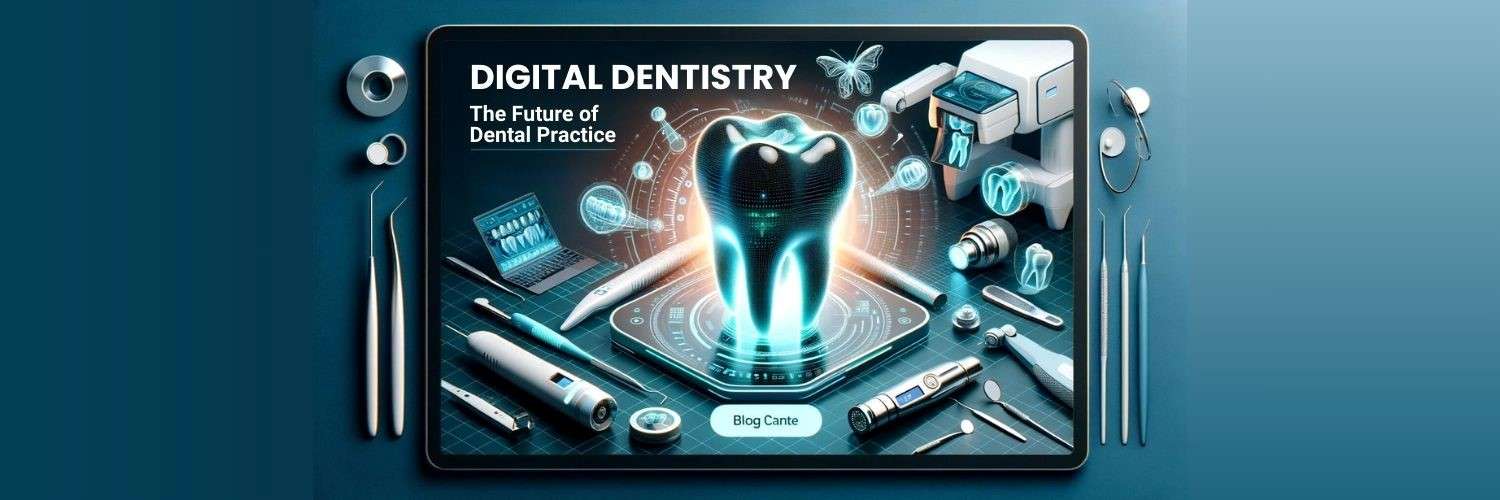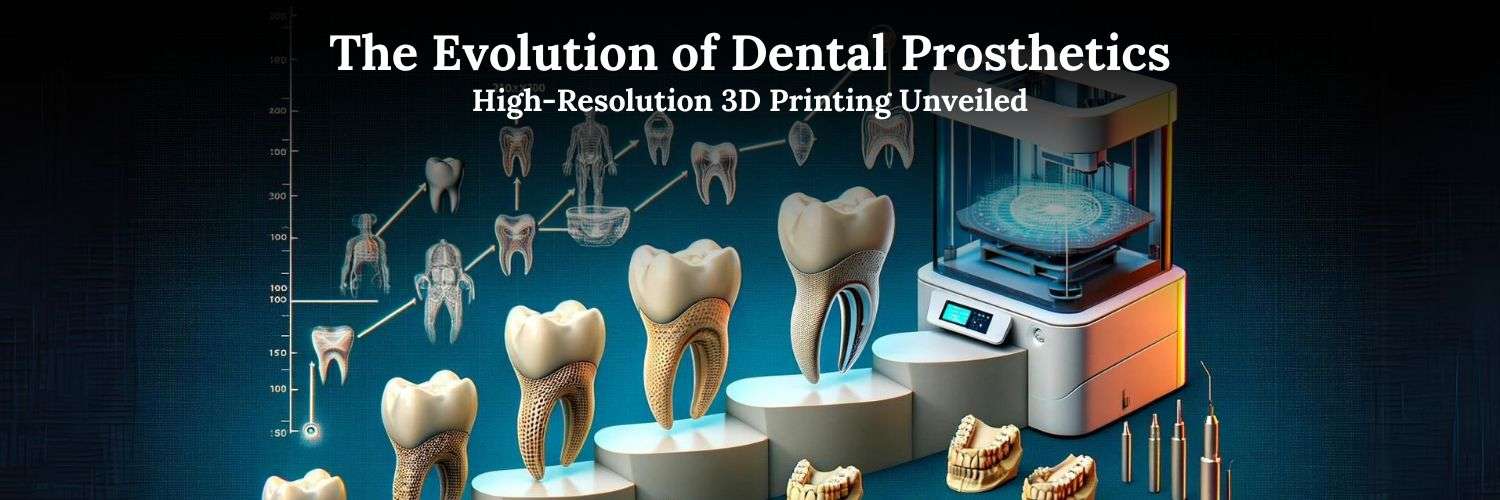Digital Dentistry: The Future of Dental Practice
Dentistry is undergoing a profound transformation, driven by the rapid advancement of digital technologies. Today’s dental practices are increasingly moving away from traditional methods and embracing digital solutions, revolutionizing everything from diagnostic procedures to treatment delivery and patient interaction. This shift not only enhances the efficiency and accuracy of dental services but also significantly improves patient experiences.
Digital dentistry encompasses a range of innovative tools and technologies, such as CAD/CAM systems for restorations, digital imaging and impressions, 3D printing for prosthetics, and teledentistry platforms for remote consultations. These technologies streamline workflows, reduce the margin of error, and allow for personalized and precise treatments that were not possible a few decades ago.
The transition to digital solutions offers substantial benefits. For practitioners, it means quicker procedures, reduced costs of materials, and the ability to provide more predictable outcomes. For patients, it translates to shorter and fewer office visits, less discomfort during procedures, and quicker recovery times. Moreover, digital records and imaging facilitate better communication and understanding between dentists and patients, enhancing overall satisfaction and trust.
By integrating digital technologies, dental practices are not only staying current with industry standards but are also paving the way for a future where dental care is more accessible, efficient, and effective.

The Impact of CAD/CAM Technology in Modern Dentistry
CAD/CAM technology, standing for Computer-Aided Design and Computer-Aided Manufacturing, has revolutionized the field of dentistry, particularly in the fabrication of dental restorations. This technology integrates digital imaging and milling techniques to design and produce precise dental prosthetics such as crowns, veneers, inlays, and onlays directly in the dental office or in lab settings.
Applications of CAD/CAM in Dentistry:
CAD/CAM technology begins with a digital impression, typically taken using an intraoral scanner that captures detailed images of the patient’s dentition. These images are then converted into 3D models on which the dental restoration is designed using specialized software. Following design completion, the data is routed to an on-site milling machine, which uses a ceramic block that matches the patient’s tooth color to create the restoration. This streamlined workflow allows for the creation of durable, well-fitting, and aesthetically pleasing dental prosthetics within a single visit.
Enhancing Precision and Efficiency:
The precision of CAD/CAM systems is unmatched compared to traditional molding and casting methods. By automating the design and manufacturing process, CAD/CAM ensures a level of accuracy that significantly reduces the need for adjustments and remakes. This technology not only fits restorations more accurately but also preserves more of the natural tooth structure by requiring less invasive preparations.
Improving Turnaround Times and Patient Outcomes:
One of the most significant advantages of CAD/CAM technology is its ability to reduce the turnaround time for dental restorations. Traditional methods often require multiple appointments over weeks, whereas CAD/CAM can deliver restorations in a single visit, enhancing patient convenience and satisfaction. The quick, precise, and minimally invasive nature of this technology also means that patients experience less discomfort and faster recovery, leading to improved overall treatment outcomes.
Incorporating CAD/CAM technology into dental practices not only streamlines the restoration process but also elevates the level of care provided to patients, marking a significant advancement in the capabilities of modern dentistry.
Advances in Digital Dental Impressions
The evolution of digital dental impressions represents a significant leap forward from traditional physical impression methods, which often involve the use of impression materials that can be uncomfortable for patients. Digital impressions utilize advanced scanning technology to create precise 3D models of a patient’s mouth, streamlining the entire process of designing and manufacturing dental restorations.
Technology Behind Digital Impressions:
Digital impressions are captured using intraoral scanners, such as the Shining 3D Aoralscan 3 Intraoral Scanner, which quickly and accurately scans the oral cavity using a compact, handheld device. This scanner projects a light source onto the dental surfaces and captures hundreds of images per second, which are then stitched together to create a highly detailed 3D model of the patient’s dentition. This process eliminates the need for traditional gooey impression materials that can cause discomfort and anxiety, particularly for patients who are prone to gagging.
Benefits of Digital Impressions:
The precision of digital impressions significantly surpasses that of traditional methods, reducing the likelihood of errors during the impression process and increasing the fit and quality of the final restorations. For patients, the quick and comfortable scanning process improves their overall experience and satisfaction. Additionally, digital impressions can be instantly integrated with other digital systems, such as CAD/CAM for restorative work, enhancing efficiency and reducing turnaround times. The digital data can also be easily stored and accessed for future reference or adjustments without the need for physical storage space.
By incorporating tools like the Shining 3D Aoralscan 3, dental practices can not only boost operational efficiency but also significantly enhance patient comfort and outcome predictability.

The Role of Dental 3D Printing
Dental 3D printing has become a game-changer in the industry, offering significant advancements in the production of dental implants, orthodontic devices, and complex prosthetic structures. This technology enables dentists and dental labs to create highly accurate and personalized dental products efficiently and cost-effectively.
Applications of Dental 3D Printing:
3D printing in dentistry involves the use of digital models—often derived from digital scans of a patient’s mouth—to fabricate various dental structures directly from biocompatible materials. This method is used to produce items including but not limited to crowns, bridges, orthodontic appliances, and even full dental models for surgical planning. The Shining 3D AccuFab L4K 3D Printer is a prime example of this technology in action, known for its precision in producing detailed dental products with high resolution.
Benefits of 3D Printing in Dentistry:
The integration of 3D printing like the Shining 3D AccuFab L4K into dental practice offers multiple advantages:
- Cost-Effectiveness: Reduces material waste and decreases the overall cost of dental appliances by streamlining the production process.
- Speed: Significantly accelerates the production process, allowing dental appliances to be fabricated within hours, which drastically reduces the waiting time for patients.
- Customization: Provides unparalleled customization capabilities, ensuring that each dental piece is tailored perfectly to the individual patient’s anatomy, thereby improving the fit and comfort of dental devices.
The efficiency, precision, and customization afforded by dental 3D printing not only enhance the quality of dental care but also improve patient satisfaction through quicker turnaround times and better-fitting dental appliances. As technologies like the Shining 3D AccuFab L4K continue to evolve, they will further revolutionize and streamline dental workflows, setting new standards in dental manufacturing.

Teledentistry: Expanding Access to Dental Care
Teledentistry is rapidly transforming the landscape of dental care by utilizing digital communication tools to provide remote consultations, diagnoses, and follow-up visits. This aspect of digital dentistry allows patients and dentists to connect via video calls, messaging, and shared images, making dental care more accessible and convenient.
Functionality of Teledentistry:
Teledentistry operates by enabling dental professionals to offer their expertise through virtual platforms. Patients can discuss symptoms, receive preliminary diagnoses, and learn about their treatment options without the need for an in-person visit. This method is particularly useful for initial consultations, routine follow-ups, and post-treatment monitoring, reducing the need for physical office visits unless necessary for hands-on treatment.
Breaking Barriers to Dental Care:
One of the most significant advantages of teledentistry is its ability to extend dental care to rural or underserved areas, where access to dental clinics is often limited. By providing remote services, teledentistry breaks down geographical barriers, offering quality dental care to populations that might otherwise go without. Additionally, it proves invaluable for individuals with mobility issues or those who find it challenging to take time off work or school for dental appointments.
Teledentistry not only makes dental care more accessible but also enhances the efficiency of the healthcare system by optimizing appointment scheduling and reducing the load on dental facilities. As more dental practices adopt this innovative approach, it is expected to play an increasingly vital role in improving public dental health, demonstrating how technology can bridge gaps in healthcare accessibility.

Integration of Digital Tools into Orthodontic Treatment
Digital orthodontics has significantly reshaped the orthodontic sector, incorporating advanced tools like intraoral scanners and custom aligners to revolutionize planning and treatment processes. These technologies facilitate a more precise, efficient, and interactive approach to orthodontic care.
Digital Tools in Orthodontics:
Intraoral scanners are pivotal in digital orthodontics; they capture highly accurate 3D digital impressions of a patient’s entire dental structure quickly and comfortably, eliminating the need for traditional silicone-based impression materials that can be unpleasant for the patient. These digital models are then used to design custom aligners and other orthodontic devices with a level of precision that manual methods cannot achieve. For instance, clear aligners are tailored to the exact contours of a patient’s teeth, providing a comfortable fit and efficient treatment progression.
Benefits of Digital Orthodontics:
For orthodontists, digital tools streamline the treatment design process, allowing for adjustments in real-time and more accurate treatment outcomes. The clear visualization of treatment stages and goals enhances communication, helping patients better understand their treatment plans. This clarity increases patient engagement and compliance, as they can visualize the potential results of their treatments beforehand.
Moreover, digital workflows in orthodontics reduce the number of required office visits for adjustments, making treatments more convenient for patients and freeing up resources for orthodontists. Overall, the integration of digital tools into orthodontic practice not only optimizes the treatment process but also significantly enhances patient satisfaction and outcomes, marking a new era in personalized orthodontic care.
Conclusion: The Future is Now for Digital Dentistry
The integration of digital technologies into dental practice has ushered in a new era of efficiency, precision, and patient satisfaction. From CAD/CAM systems revolutionizing dental restorations to intraoral scanners transforming orthodontic treatments, digital tools have significantly enhanced the capabilities of modern dentistry. These advancements not only streamline dental procedures but also improve the accuracy of diagnoses and treatments, offering patients customized care that was once thought impossible.
As we look to the future, it is clear that digital dentistry is not just a passing trend but a fundamental shift in how dental care is delivered. Dental professionals are encouraged to embrace these technologies to remain competitive and provide the highest standard of care. By adopting digital solutions, engaging in continuous learning, and adapting to new advancements, dentists can ensure they are well-equipped to meet the evolving needs of their patients and the demands of the ever-changing dental landscape. Digital dentistry is the way of the future.





Leave a comment